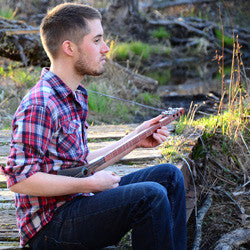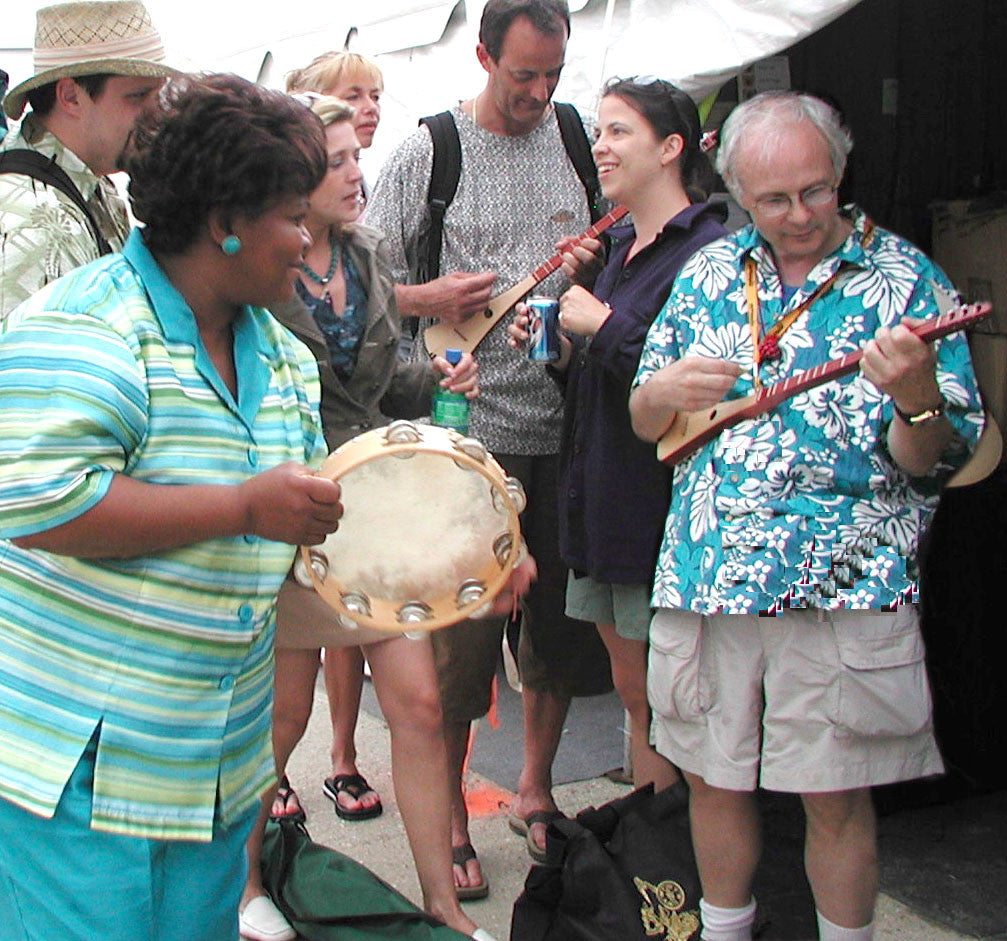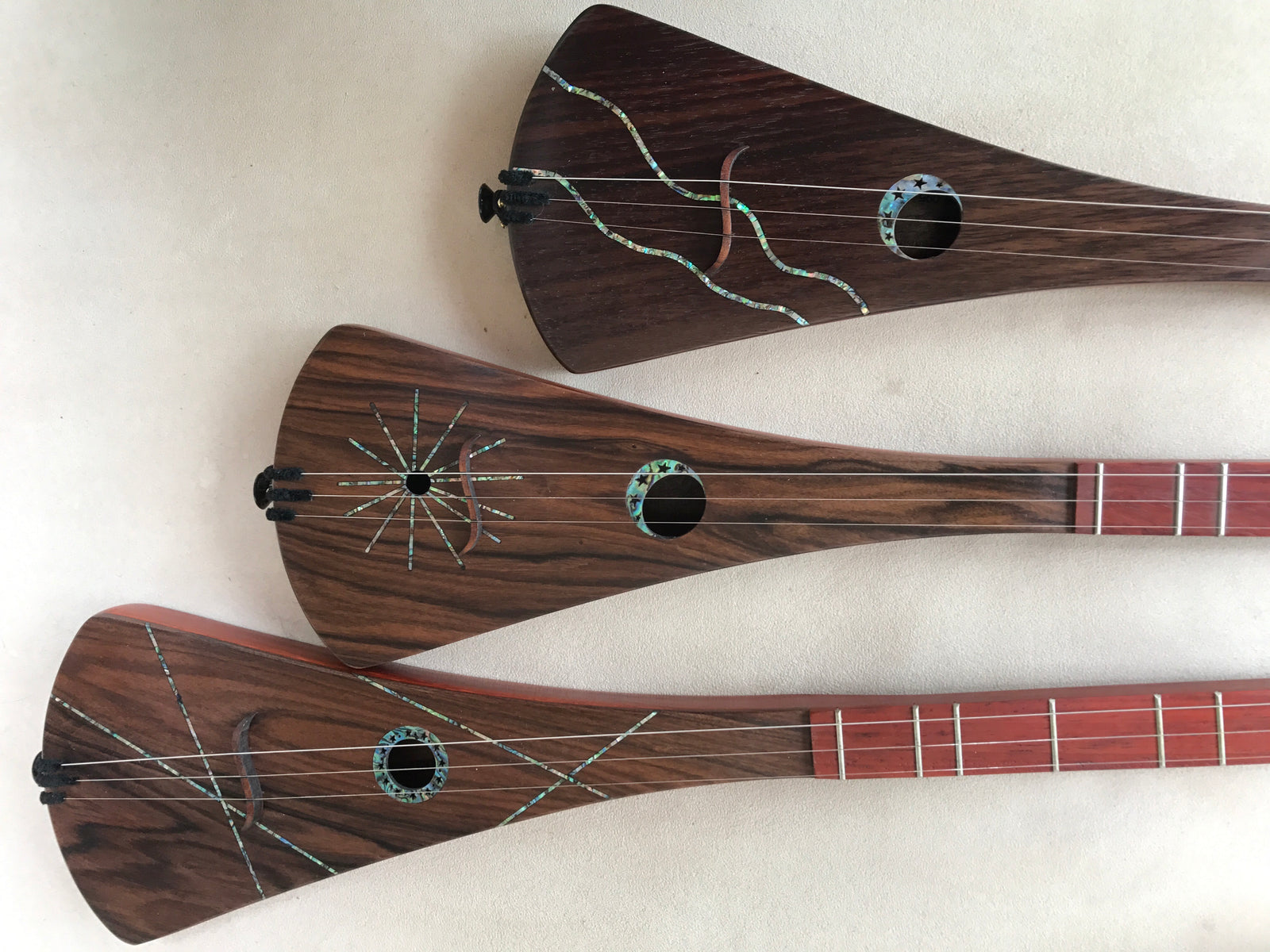Unravelling the mysteries of Rhythm: Music is Easy #3
We have a lot of great written instructions, videos, and audio clips to help you learn to play the Strumstick. This blog series is more about learning how Music works, than instructions per se. For Strumstick instructions, see our Instructions Page, and our Video-Audio Page.
In the last article (Rhythms-Simple) we created different rhythms by counting beats and offbeats like:
1 2 3 4+1 2 3 4+. Now we are going to make some larger spaces appear by leaving out beats. Then we will see how our rhythm work applies to Strumstick (or guitar!)
Take our Steady beat 1 2 3 4 etc. count it out loud.
Now, lets skip the 2 beat
1 3 4 1 3 4.
You could just do nothing when the "2" space comes up. Alternatively, to make that easier to count, we could count "one fake three four". Whisper the word "fake"... the written symbol for that will be a bullet "•".
1 • 3 4 1 • 3 4
Let yourself feel what this sounds like. These are Experience exercises, not thinking exercises.
By whispering the word "fake" while counting, we give ourselves something to do while counting, and that makes it easier to leave an exact one beat space. Try this and let your self feel the beat pulse where the left-out beat is. The beat is still actually there, we simply are not making a sound to mark it.
If each of these beats was a downstrum across the strings on Strumstick or Guitar, we would do down fake down down. The fake downstrum (moving down but not hitting the strings) gives your hand something physical to do, instead of waiting around for an uncertain period of time.
You could leave out other beats too...
1 2 • 4 1 2 • 4
1 2 3 • 1 2 3 •.
Remember to whisper "fake" where you see the •, leaving a space in the rhythm. With each exercise, let yourself experience what it sounds and feels like. The connection between physical experience and feeling is more useful for making music than having only an intellectual understanding of what you are doing. Feeling differences may be subtle, but each rhythm will have a different "feel" to it.
Putting it all together: Free Strumming
You can add offbeats, or leave out beats. That allows making a wide range of rhythm patterns. If beats are downstrums on an instrument, offbeats are "upstrums" which happen in between downstrums.
1 2 3 + 4 + would be down down downup downup, etc. You can hear this demonstrated Here (Audio) or see it demonstrated Here (Video). We call this "Free Strumming", and it lets you make up a changing, varying rhythm as you go along. This adds tremendous interest to your playing.
We have all had the experience of someone playing the same exact rhythm over and over while playing a song; it becomes monotonous and actually distracting after a short while. Free Strumming, with varying rhythm patterns as a song goes along, makes a song a lot more interesting. Even better, each rhythm pattern has its own feeling, its on sense of energy. Using multiple patterns allows you to pace a song, to create a rise and fall of energy in the accompaniment, to work with how you want to song to feel.
The next article will look at how rhythms affect feeling, and how you can "paint" with rhythm.






Blair Baillie
January 13, 2017
Hi Rob, I spent several months up in Alert which is close to the North Pole and brought my Strumstick along with me to play on it for the time I was there. We had a show band visit us and I had the chance to do some jammin with the guitarist. We tried it out the day before we played in front of everybody on stage. He played on his Taylor acoustic and I strummed along with him. He couldn’t get over how no matter what chord he played on his guitar anywhere that I strummed on my Strumstick it fit right in with his chords he played on his Taylor. We actually sounded pretty good together. I just thought I would pass this on to you. :)